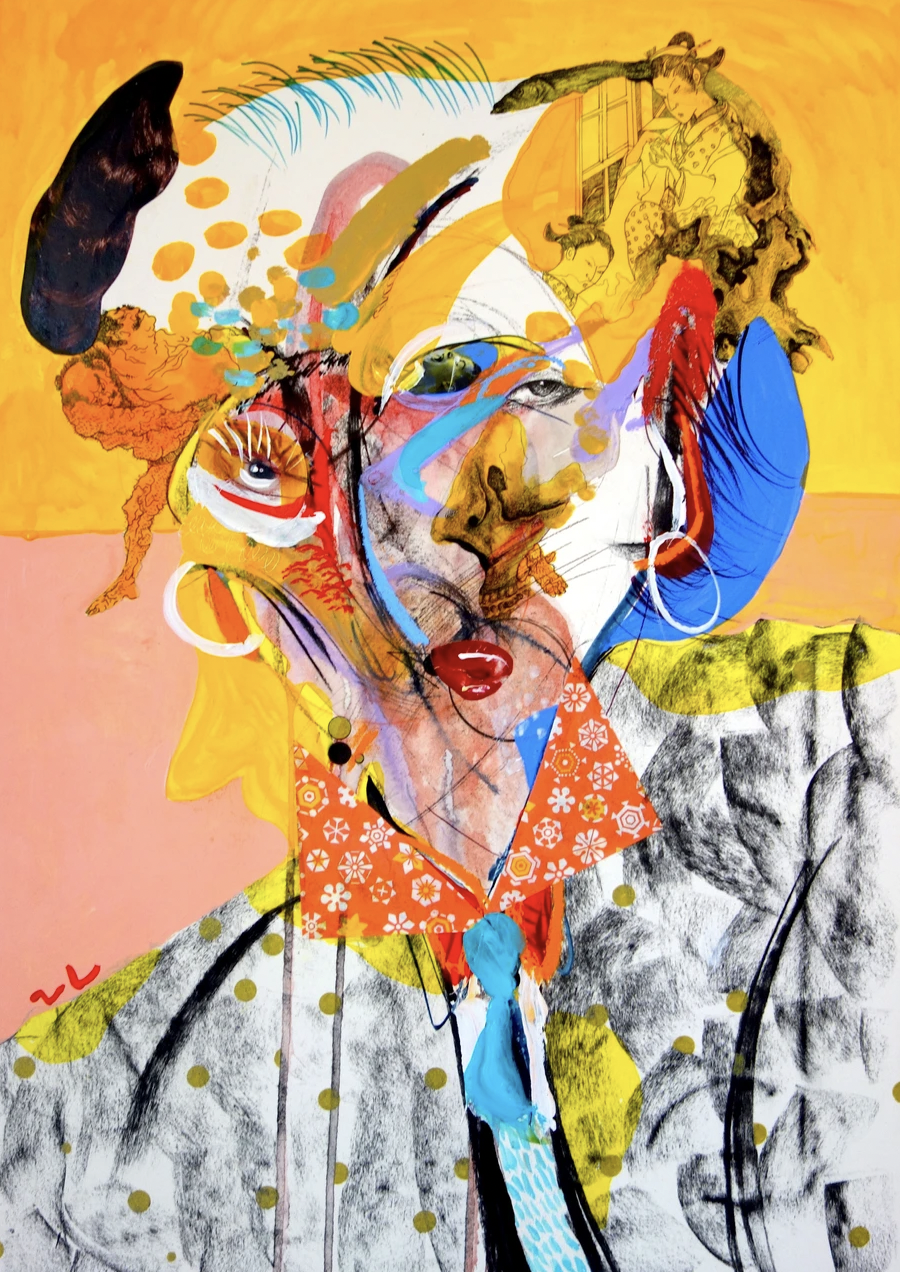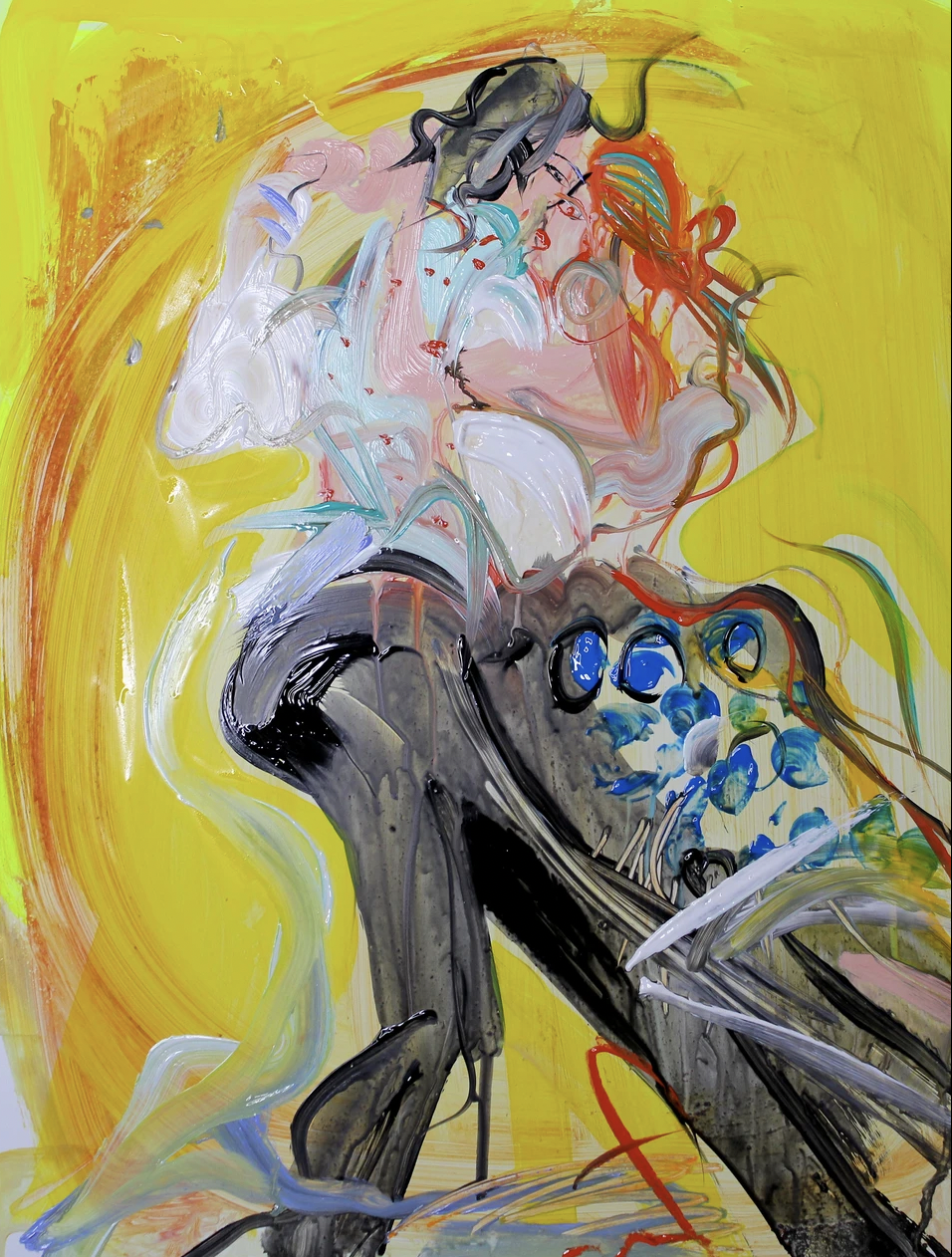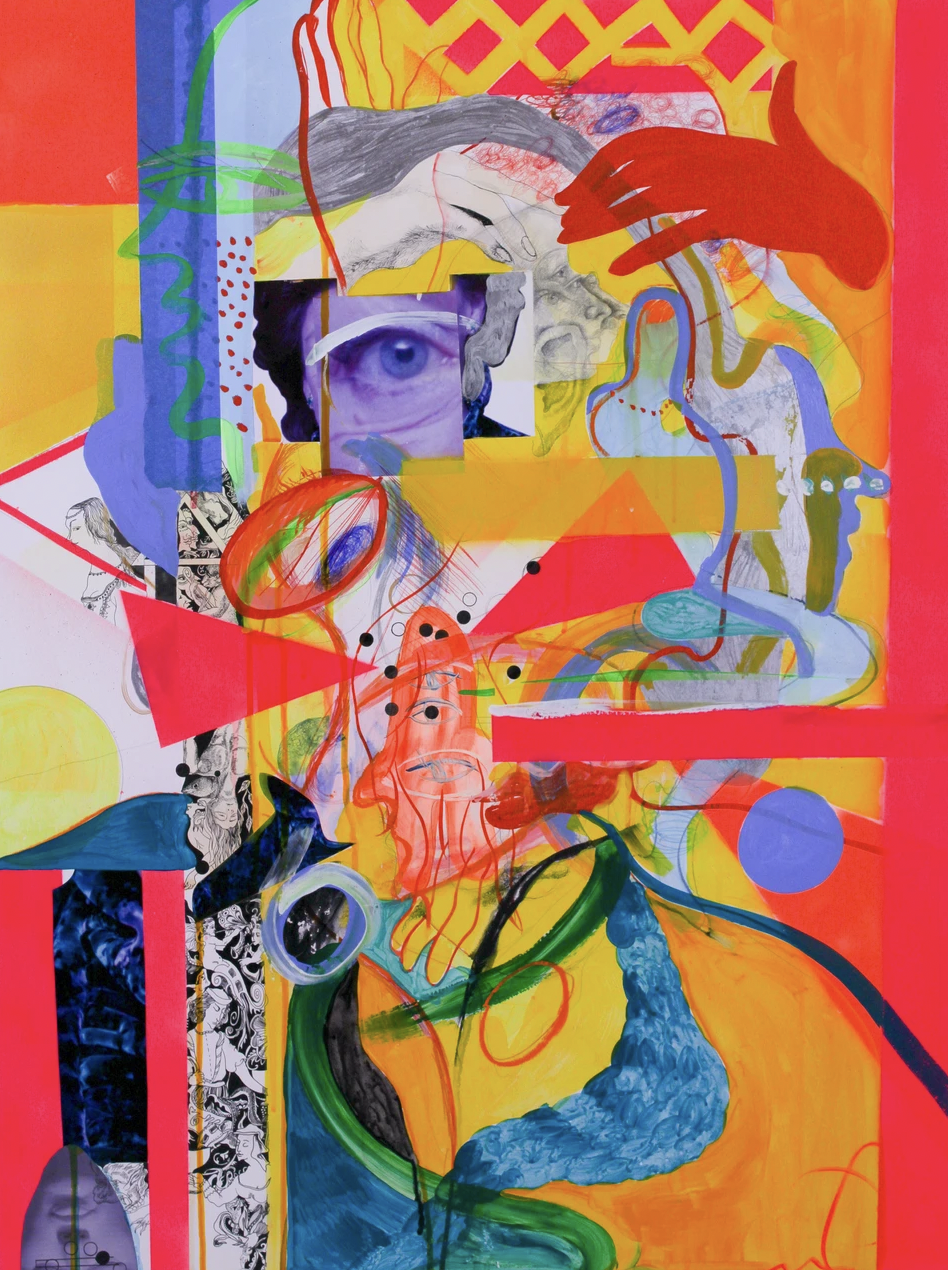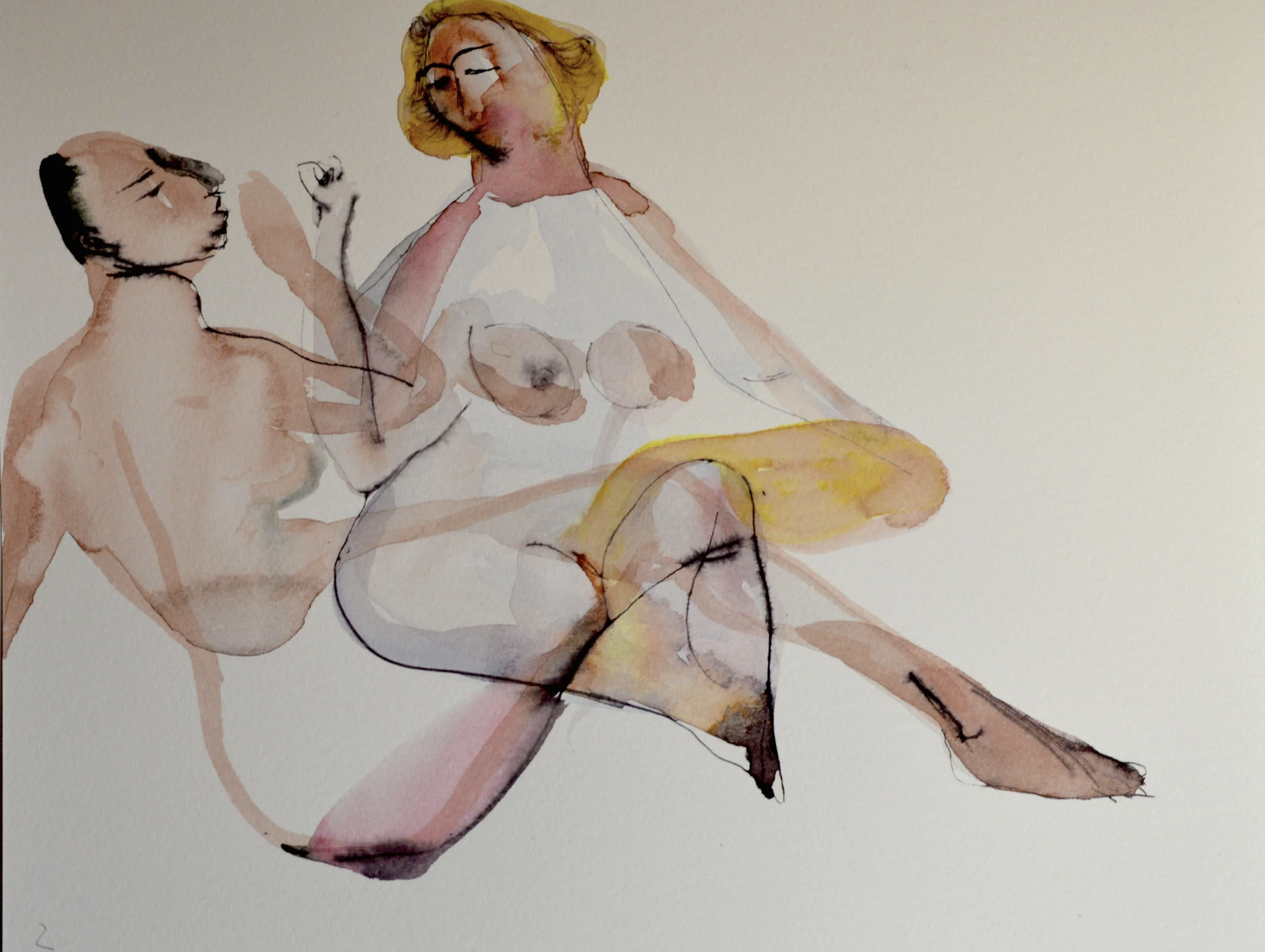ARTIST INTERVIEW: Zi Ling
Please introduce yourself. How has your upbringing with an artist as a father, inspired you and your artwork?
I was born in Yellow Mountain, a small town in China. My father is an artist, a pioneer of the 85 New Wave Movement. And my mother, a Chinese teacher. I was raised by my grandparents till the age of four. They lived on a very famous street named Bai Shu Street in the old town, that once was an area occupied by artists, craftsmen, antique dealers, merchants, writers, and the most illustrious arithmetician Cheng Dawei. My grandpa was the only tailor on the street, who was well known for his Cheongsam for rich ladies. When I was little, I was influenced a lot by my colourful neighbourhood.
At the age of one, one day, when my father took a tea break from his painting and went to the kitchen, I picked up a large brush, actually bigger than my face, and started to paint passionately on his unfinished canvas. A lot of colours with such a mess. Pollock style. And my father’s painting was utterly ruined, unfortunately. But the truth is, I actually quite enjoyed the whole process. This is the beginning of my art journey. Having an artist father who is strongly influenced by the traditional Chinese culture and the old-fashioned way of parenting is a complex experience for me. So that is why I am also doing theatre as a perfect balance for my career. However, both theatre and painting have something in common, which is the passion for discovering humanity and identity.
You have a series of works called ‘Dance inspired’. Why have dancers in particular captivated you? Why are you interested in capturing movement in your work? How does your artistic style help you to suggest movement?
For me, colours, marks and movements are same thing. I am an intuitive artist. Dancers are one of my favourite subjects, a spirit of a dancer lies in their movements and rhythm. Sometimes I cannot express my feelings through words, but through capturing movements I found a way out, a real freedom within. That is why I not only paint dancers, but also collaborate with them in theatre projects. Making gestures and movements brings me so much joy, as well as making marks and colours.
What are the characteristics of an interesting subject to paint/draw?
All the interesting subjects are from our daily life. Imagination delivers all the facts from my painting, I lost myself between real and surreal.
How do you capture the essence of an individual in your portraits?
Everything starting from the eyes, then stories, most people I met on the way during my travels. I like to paint strangers. In order to finish a good portrait, for me, means I need to look and listen with the eyes of compassion. And also, the painting itself brings about healing. Forgetting all the techniques but focusing on the present moment is the foundation of the right image.
Thinking about your most recent work, what was your creative process? Describe the journey of the piece from start to finish.
It’s my privilege to create work of this legendary female figure Dame Adeline Génee, the founder of Royal Academy of Dance. She expressed herself fully in dance, and she was also knowledgeable, innovative and a nurturing teacher. When she is dancing, her eyes are speaking with joy. As a ballet dancer, miracles happen when she is flying beyond the burden of pain on her feet into a pure pleasure as a freedom. This is truly inspiring to me.
I did quite a lot of works reading her through all imagery materials such as old photographs, ballet magazines, books and video resources. I am trying to make a connection to her. I also use drawings and collage to help me capture her movement through my brushwork, and her facial expressions and emotions through the details. It helps me to understand more about her own vision in her practice. When you paint a portrait, you get an opportunity to look at this person inside-out, and to locate something real on your canvas. An important message from Dame Adeline to me is that it is possible for us to fall in love with this world over and over again. And for her, the dance is the vehicle of all delights. And I hope that the viewers will perceive her passion in this.
Which project has been your favourite to work on, and why?
“It’s not easy being a princess”, this iconic photograph was taken in 1986 by Ken Griffiths. Last year was the 20th anniversary of Princess Margaret’s death, and I was invited by Ken Griffiths Bureau to reinterpret the photograph with my own vision, and to expose a different narrative that I have carved from beneath the picture. As an artist, nothing will be more exciting than having the opportunity to challenge yourself. This famous photograph is very thought-provoking and offers me another perspective to connect to this wonderful woman; Princess Margaret.
How does your artwork reflect you as an individual?
I see my art as a mirror reflecting my heart, rather than my mind.
You have had some incredible accomplishments so far as an artist, which achievement has been the pivotal point in your career?
I became the winner of the Royal Academy Dance portrait competition; definitely one of the most pivotal points in my career.
Why do you think art is important in society?
As an individual, I have an eating disorder. Through my personal journey with psychotherapy, I realised that an eating disorder is a form of self-harm, and there are currently 1.6 million people in the UK who have the same issue. I then became very motivated to explore this social Phenomenon further through theatre language. I am now preparing a new comedy physical theatre project with Surrealist settings. The project will invite dancers, actors and community members, to perform together on stage. And it will focus on several stories based on case studies, especially on younger generations who struggle with food, body image, identity and self-value. I want to use humour and movements, these powerful tools, to transform the fear towards food into self-acceptance and self-love. I remember someone has said, ‘small things are responsible for great changes.’ Being an artist, I believe I had to do the same in order to heal myself and restore communication with others.











